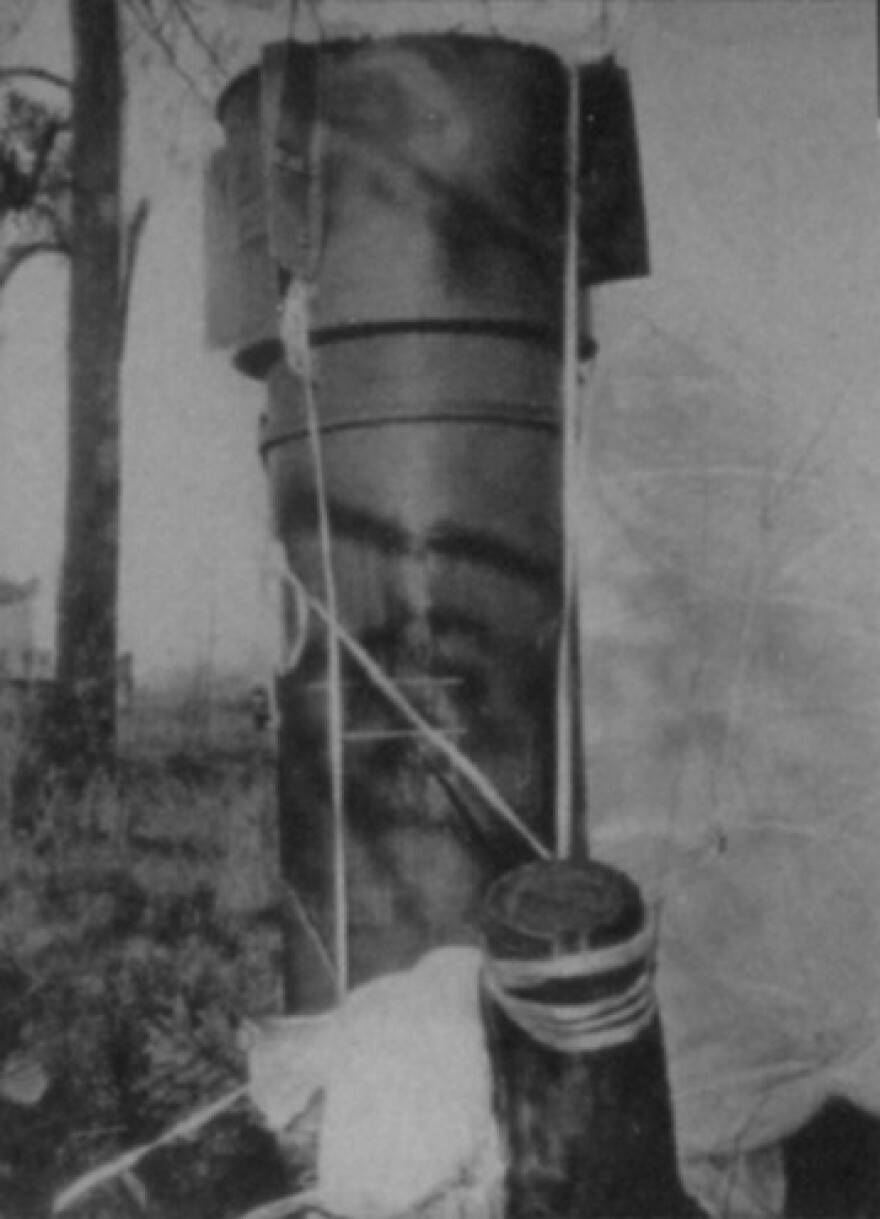During the Cold War, many Americans lived in fear of a nuclear attack from the Soviet Union. But the United States experienced one of its closest brushes with nuclear disaster on its own soil. On January 23, 1961 a B-52 bomber accident caused two hydrogen bombs to drop over Goldsboro, North Carolina.
ÔÇťIt would have created a huge firestorm in North Carolina,ÔÇŁ said Eric Schlosser, journalist and author of ÔÇťÔÇŁ, in an interview on The State of Things.
He continued, ÔÇťAnd had the prevailing winds been in the right direction, it could have deposited lethal radioactive fallout over Washington, Philadelphia, and even New York City.ÔÇŁ
The two warheads were accidentally released when the B-52 bomber began to break up after a routine refueling.
ÔÇťThe right wing actually folded up and broke off the airplane,ÔÇŁ said Joel Dobson, author of ""
As the plane disintegrated, the lever controlling the release mechanism was triggered and the bombs fell out of the bay. Adam Mattocks, the third pilot on the flight, described how he survived the crash by parachuting out of the crumbling jet.
ÔÇťI said to myself, IÔÇÖve got two ways out. I canÔÇÖt walk downstairs fast enough to get outÔÇŽso I decided to jump, make the turn, and go out the aircraft commanderÔÇÖs hatch.ÔÇŁ
As the crew of the B-52 evacuated, the warheads continued to fall. One bomb landed in a swamp and smashed to pieces. The other deployed its parachute and slowed to optimum blast altitude, as if it had been dropped in a routine mission over enemy territory.
Crisis was averted when the bomb failed to detonate. But despite the safety mechanisms working properly, Schlosser asserts there was still reason for alarm.
ÔÇťThere were so many wires crossing that a stray wire could have provided the electricity for the weapon to fully armÔÇŽso it was a close call,ÔÇŁ he said.
Once the bombs were on the ground, it was up to the Air ForceÔÇÖs Explosive Ordnance Disposal team to disarm them safely. was the leader of this team that located and disarmed the bombs that were dropped in Goldsboro.
ÔÇťMy squadron commander called me and said, 'Jack, IÔÇÖve got a real one for you,'ÔÇŁ ReVelles said.
He arrived to a chaotic scene. ÔÇťIt was a mess. It looked like another world war had taken place,ÔÇŁ he recalled.
ReVelle and his team were able to retrieve all the pieces of the atomic weapons, except the "secondary" of one of the bombs. While the secondary is not explosive, it contains plutonium and remains buried in the earth in Goldsboro.
Although disaster was averted in 1961, Goldsboro represents just one of many nuclear near-misses in the United States. Schlosser's research uncovered more than 1200 nuclear accidents and errors between 1950 and 1960.



